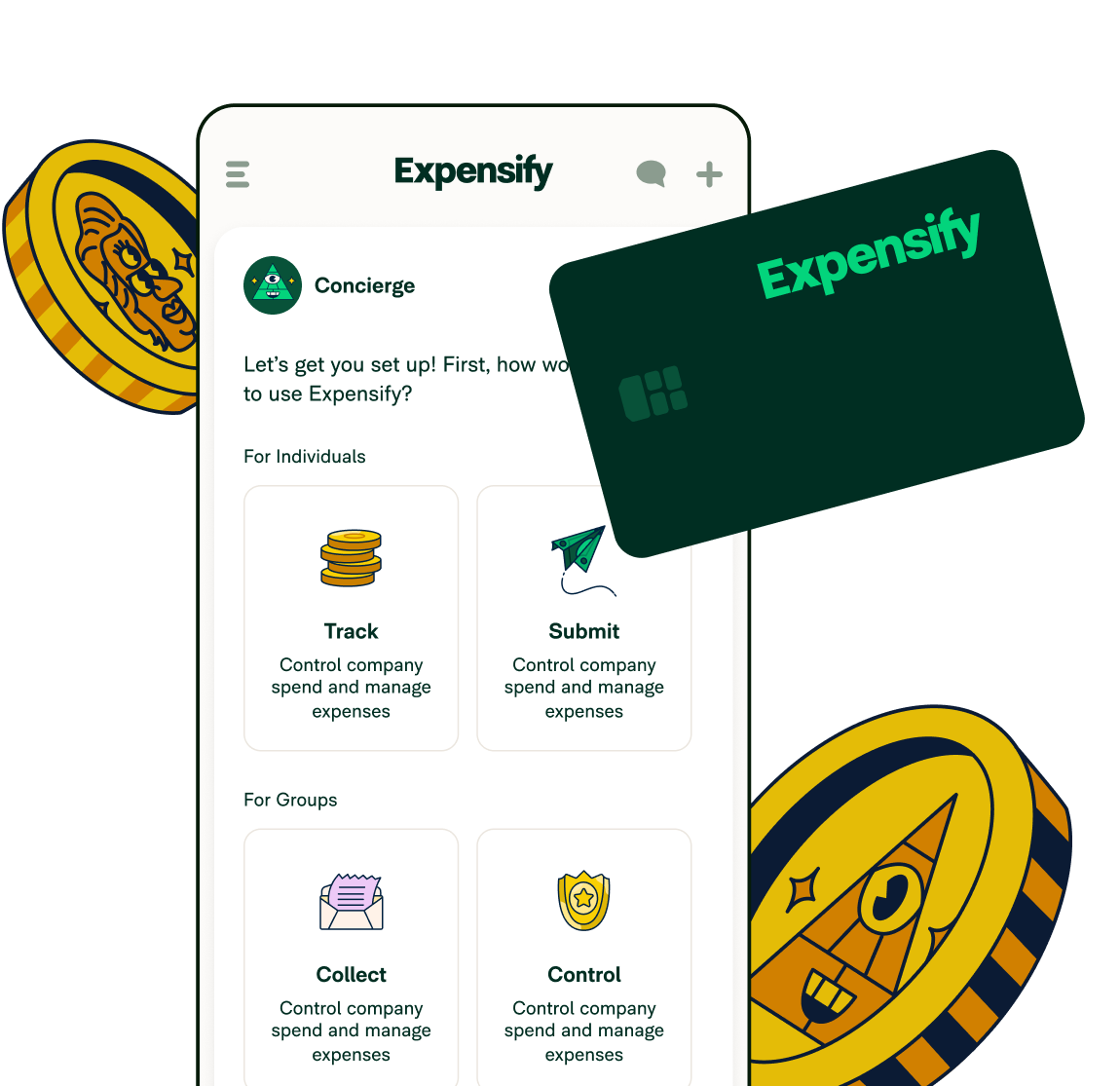A guide to travel and expense policy best practices with Expensify

Small businesses waste countless hours wrestling with travel policies, expense reports, and approval workflows every month. For small businesses, this challenge hits especially hard - each hour spent managing travel expenses is an hour lost growing the business. The mission? Create travel policies that protect the bottom line without burying teams in bureaucracy.
That's where Expensify Travel comes in, transforming complex travel and expense management into a streamlined operation. In this guide on corporate travel policy best practices, we’ll show you how to create, implement, and manage travel and expense policies that work in the real world using Expensify's powerful features. Whether you're establishing your first travel policy or optimizing existing processes, you'll discover practical strategies to save time, reduce costs, and keep both your finance team and traveling employees satisfied.
Understanding travel and expense policy fundamentals
Before diving into specific travel and expense policy best practices, let's tackle the building blocks of effective management. When done right, these fundamentals create a framework that supports both your business goals and your employees' needs.
Core components of an effective policy
The strongest travel expense policies for employees balance control with flexibility. At a minimum, your policy should clearly outline:
Booking requirements and restrictions for all travel types
Spending limits and guidelines by expense category
Required documentation and submission timelines
Approval workflows and escalation paths
Consequences of policy violations
With Expensify, these components become more than just words in a document - they transform into automated rules that guide employees through the booking process.
Benefits of standardized policies
When you standardize and configure travel policies through Expensify, you’re going beyond creating rules. You're building a system that works for everyone. Finance teams gain better spend visibility and control. Employees get clear guidelines and faster reimbursements. And management sees improved forecasting and budgeting capabilities.
Most importantly, standardized policies eliminate the guesswork. No more debates about what qualifies as a reasonable hotel rate or whether business class flights are allowed. Everything is clearly defined and automatically enforced.
Common challenges and solutions
Even the best-written policies face real-world challenges. Here's how Expensify Travel helps overcome common hurdles:
Policy visibility: Instead of expecting employees to memorize a 20-page document, Expensify surfaces relevant policy details right when they're booking travel.
Consistent enforcement: No more awkward conversations about out-of-policy expenses. Expensify automatically flags violations before they happen.
Approval bottlenecks: Lost in email threads? Expensify's automated workflows keep approvals moving, with clear visibility into where each request stands.
How travel approval workflows work
The key to efficient travel management lies in streamlined approval processes. Expensify offers three distinct approval methods, each designed to match your organization's needs and control preferences.
Understanding different approval types
Soft approvals: Speed with oversight
Think of soft approvals as a "trust but verify" approach. Bookings are automatically approved unless a manager steps in within 24 hours. While this keeps things moving quickly, it requires vigilant manager oversight for out-of-policy requests.
Hard approvals: Maximum control
For businesses needing tighter control, hard approvals require explicit manager action within 24 hours. Without approval, bookings are automatically canceled and refunded. This prevents unauthorized travel but requires prompt manager attention to avoid disrupting travel plans.
Passive approvals: A light touch
The most flexible option, passive approvals simply notify managers of out-of-policy travel without requiring action. This works well for mature organizations with high trust and strong policy compliance.
How to set up travel approval workflows
Implementing these workflows in Expensify is straightforward:
Navigate to the Travel tab
Select "Book or manage travel"
Access the Program tab and choose Policies
Under General settings, specify approval methods for each travel type
Flight policy best practices
Creating an effective flight policy requires balancing cost control with employee comfort and productivity. Here's how to optimize your flight policy settings in Expensify.
Setting booking class restrictions
Start by defining clear boundaries for flight bookings:
Specify allowed cabin classes (economy, premium economy, business, first)
Set rules for cabin upgrades
Define long-haul flight exceptions
Establish different policies for domestic versus international travel
Managing your budget effectively
Control costs without sacrificing flexibility by implementing smart budgeting rules:
Median fare calculations
Set percentage thresholds above median fares
Define acceptable price ranges for common routes
Account for seasonal price fluctuations
Consider route-specific pricing guidelines
Price cap implementation
Establish maximum fare limits by route type
Create duration-based price caps
Set different limits for domestic and international flights
Include flexibility for peak travel periods
Finding the lowest logical fares
Help employees make cost-effective choices while maintaining reasonable travel conditions:
Layover preferences
Define maximum connection times
Set minimum connection windows
Specify preferred connection airports
Balance cost savings against travel time
Connection policies
Set the maximum number of stops
Define acceptable routing options
Establish preferred airline partnerships
Consider airport change restrictions
Managing flight add-ons and requirements
Add-on management
Specify allowable baggage policies
Define seat selection rules
Set guidelines for early check-in
Clarify policies on travel insurance
Advance booking requirements
Set minimum advance booking windows to avoid last-minute bookings at premium cost
Create escalation procedures for last-minute travel
Define emergency booking exceptions
Implement early booking incentives
Sustainability considerations
Set CO2 per kilometer thresholds
Implement carbon offset programs
Encourage direct flights when possible
Track and report environmental impact
Creating an effective hotel policy
Your hotel policy sets the foundation for comfortable, cost-effective business stays. Here's how to structure your hotel policy in Expensify for maximum effectiveness.
Managing rate restrictions
Control costs by setting clear boundaries:
Define restricted hotel types through keyword filtering
Block specific rate types (like non-refundable or prepaid rates)
Set rules for resort fees and additional charges
Create guidelines for special event periods
Creating price strategies
Implement smart pricing controls that adapt to different locations and needs:
Location-based customization
Set city-specific rate caps
Adjust limits for high-cost markets
Create regional pricing tiers
Account for seasonal variations
Star rating considerations
Define acceptable hotel categories
Set different limits by property rating
Balance comfort with cost
Consider location-specific exceptions
Setting booking and cancellation rules
Protect your business while maintaining flexibility:
Booking windows
Set minimum advance booking requirements
Define last-minute booking procedures
Create guidelines for extended stays
Establish group booking protocols
Cancellation requirements
Define acceptable cancellation terms
Set rules for non-refundable bookings
Create procedures for emergency changes
Establish a review process for cancellation fees
Managing rates effectively
Ensure consistent value across all bookings with the following:
Quality standards
Define minimum acceptable ratings
Set cleanliness requirements
Establish location safety guidelines
Create preferred property lists
Median rate calculations
Set radius parameters for rate comparison
Define competitive set criteria
Establish rate benchmarks by market
Create seasonal adjustment guidelines
Setting ground transportation guidelines
Ground transportation often represents a significant portion of travel spend, yet it's frequently overlooked in policy creation. Here's how to create comprehensive guidelines that cover all bases.
Car rental guidelines
Vehicle category restrictions
Define acceptable vehicle classes
Set guidelines for luxury and premium vehicles
Create rules for SUV and van rentals
Establish exceptions for client meetings or group travel
Engine type specifications
Set preferences for fuel-efficient vehicles
Define hybrid/electric vehicle policies
Create guidelines for fuel type selection
Establish mileage tracking requirements
Daily price caps
Set maximum daily rental rates
Define additional fee allowances
Create location-specific price limits
Establish long-term rental guidelines
Insurance requirements
Define required coverage levels
Set collision damage waiver policies
Establish liability coverage minimums
Create procedures for international rentals
Implementing policy enforcement and compliance
An effective travel policy is only as good as its enforcement. Here's how to use Expensify to ensure compliance while maintaining flexibility for legitimate exceptions.
Managing out-of-policy bookings
When employees need to book outside policy limits, having clear procedures is crucial:
Set up automated alerts for out-of-policy bookings
Create clear escalation paths for approvals
Define acceptable exception scenarios
Establish documentation requirements
Using reason codes effectively
Make policy exceptions trackable and accountable:
Create standardized reason codes for common situations
Require detailed explanations for exceptions
Set up automated tracking of exception patterns
Establish review processes for frequent exceptions
Integrating approval workflows
Managing policy vs. out-of-policy approvals
Set different approval paths based on policy status
Create automated routing for different scenarios
Define approval authority levels
Establish emergency approval procedures
Handling time-sensitive requests
Set up 24-hour approval windows
Create escalation paths for urgent requests
Define weekend and holiday procedures
Establish backup approver protocols
Managing refunds and cancellations
Set clear refund request procedures
Define cancellation documentation requirements
Create change fee approval processes
Establish reimbursement timelines
How to set up policies in Expensify
Setting up your travel policies in Expensify doesn't have to be complicated. Here's your step-by-step guide to getting everything configured correctly.
Following the configuration process
Access the Travel tab
Select "Book or manage travel"
Navigate to the Program tab
Choose Policies under the menu
Select either Employee or Nonemployee sections
Creating your first policy
Start building your policy framework:
Click "Add new" under your chosen category
Define basic policy parameters
Set up approval workflows
Configure spending limits
Establish booking restrictions
Managing policy members
Control who falls under each policy:
Use the "Edit members" section
Select groups or individuals
Assign policy levels
Set up policy hierarchies
Define exception groups
Customizing policy options
Fine-tune your policies for different needs:
Customize by department
Set role-based restrictions
Create location-specific rules
Define seasonal adjustments
Setting up approval methods
Configure approval settings for each travel type:
Flight approvals
Set approval thresholds
Define routing rules
Establish class restrictions
Configure advance booking requirements
Hotel approvals
Set rate limits
Define star rating requirements
Configure location restrictions
Set booking window requirements
Car rental approvals
Define vehicle class limits
Set daily rate caps
Configure insurance requirements
Set rental duration limits
Rail travel approvals
Set class restrictions
Define fare limits
Configure booking windows
Set route restrictions
Best practices for policy success
Creating a travel policy is just the beginning. Long-term success depends on how well you communicate, implement, and maintain your program over time. Let's explore the key areas that will help ensure your travel policy thrives.
Developing effective communication
Clear communication forms the foundation of successful policy adoption. Start by creating clear, jargon-free policy documents that everyone can understand. Quick-reference guides and real-world examples help employees grasp complex concepts quickly.
Regular updates keep everyone informed of policy changes, while an easily accessible FAQ section addresses common questions before they become issues. In fact, with your Expensify account, you can upload a PDF of your organization’s entire policy so that each employee can read the rules at any given time.
Building a strong training foundation
Training shouldn't be a one-time event. Begin with comprehensive onboarding sessions that introduce new employees to your travel policy. Support this with ongoing education through video tutorials and regular refresher sessions when policies change. For frequent travelers, consider providing specialized training that addresses their unique needs and challenges.
Maintaining policy effectiveness
Regular reviewing and adjusting keep your policy relevant and effective. Schedule quarterly reviews to analyze compliance patterns and gather feedback from both travelers and approvers. Stay informed about industry trends and benchmark your policy against similar organizations. Pay special attention to exception requests – they often highlight areas where your policy might need adjustment.
Measuring and improving performance
Track key metrics like policy compliance rates, average approval times, and employee satisfaction scores. Use this data to identify bottlenecks and optimization opportunities. Regular reviews of spending patterns and supplier relationships can reveal opportunities for cost savings without sacrificing service quality.
Bringing it all together
Creating and managing an effective travel and expense policy doesn't have to be overwhelming. By following these travel and expense policy best practices and using Expensify's robust features, you can build a policy that works for everyone in your organization.
When it comes to travel and entertainment policy best practices, the best policies evolve over time – they're living documents that should grow and change with your business. Start with clear fundamentals, implement strong approval workflows, and continuously refine your approach based on real-world feedback and results.
When done right, your travel and expense policy becomes more than just a set of rules – it becomes a valuable tool that supports your business growth while keeping costs under control.
FAQs about travel and expense policy best practices
-
A comprehensive travel and expense policy should include clear guidelines for all travel-related expenses, booking procedures, and reimbursement processes. Essential elements include:
Spending limits for flights, hotels, and ground transportation
Booking timeline requirements
Approval workflows
Documentation requirements
Travel expense report submission deadlines
With Expensify, these components can be automated and enforced systematically, ensuring consistent application across your organization.
-
A good expense policy balances control with flexibility. It should be clear enough that employees understand the rules, yet flexible enough to accommodate legitimate business needs. The best policies are:
Easy to understand and follow
Fair and reasonable for all employees
Consistently enforced through automated systems
Regularly updated to reflect changing business needs
Supported by efficient approval and reimbursement processes
-
While specific reimbursement policies vary by company, standard best practices include:
Required documentation (receipts, explanations)
Submission deadlines (typically within 30 days)
Automated approval workflows, removing the possibility of human error
Defined payment timelines
Specified payment methods
Categories of allowed and disallowed expenses
Expensify helps standardize these elements through automated workflows and clear policy enforcement.
-
To write an effective travel reimbursement policy:
Start with clear spending limits for each expense category
Define required documentation and submission timelines
Establish approval workflows and authority levels
Create processes for handling exceptions
Include audit and compliance requirements
By using Expensify, you can transform these written guidelines into automated processes that make compliance easier for everyone involved.







